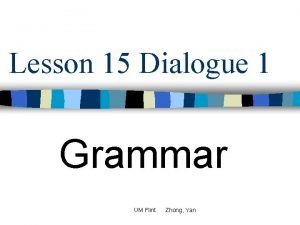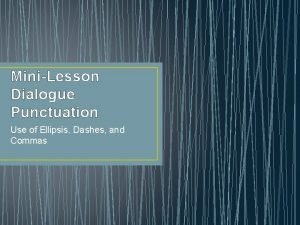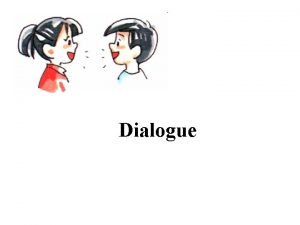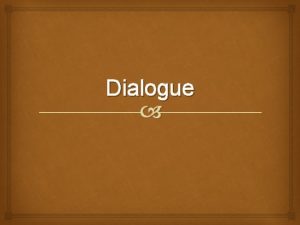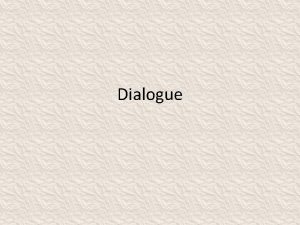Lesson 7 Dialogue and Conversation Dialogue Dialogue is





- Slides: 5

Lesson 7 Dialogue and Conversation

Dialogue �Dialogue is the tone you want your characters to have. �It is the characters voice in a story. �An exchange of dialogue between two or more characters is called a conversation.

Why Writers Use Dialogue � To Show rather than Tell The characters become more real to the readers when the writer describes rather than just tells. � To Build Tension and Drama Stories become a bore when there is no tension or drama. � Reveal Character To Share how a character is, what he/she is doing, feeling etc. with the readers of the story. � To Create White Space on a Page This technique mostly attracts busy readers

Basic Elements When Creating Dialogue � Give it Purpose – don’t just write dialogue because you just want to. Write a dialogue for a reason. � Keep it Concise – means a writer should not beat around the bush. � Make it Flow – construct dialogue in a way that the readers will not get bored reading it. Do not over use dialogue tags (he said, she said). � Give it Distinction – no writer wants a character in their story to sound the same. � Do not forget Quotation marks – this is a marker between words from the story and words from the character themselves. � Punctuate Appropriately – Punctuation use helps readers understand how the characters are feeling at that specific moment.

Tips when Writing Dialogue � Read other stories with dialogue. This helps the writer get an idea on how he/she will construct his/her own dialogue in their work. � Listen to conversations. Try to catch the rhythm of natural speech and how different people use dialogue when conversing with one another. � Read Aloud. When the writer reads what he/she has created aloud this helps them distinguish if the conversation sounds good or not.


